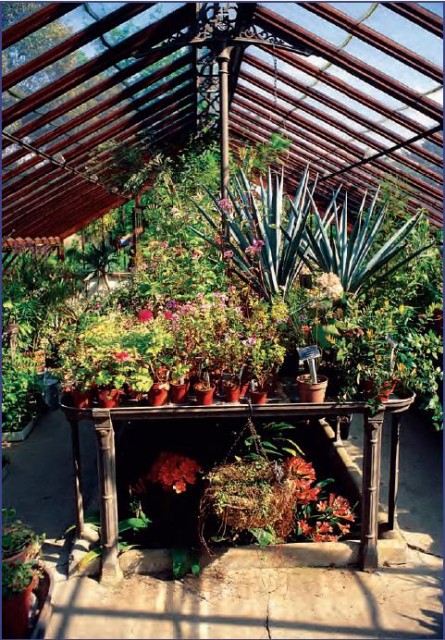The Apothecaries’ Garden at Chelsea
In every major city there are annual events that mark the passing of the seasons. London is no exception, and one of its annual festivals attracts gardeners and garden enthusiasts from all over Britain. The Chelsea Flower Show is a celebration of garden design and plant breeding. The show takes place in a garden that has existed since 1673, when it was established by the Worshipful Society of Apothecaries on the site of an existing garden belonging to the politician Sir John Danvers (1588–1655). It was known originally as the Apothecaries' Garden.
Apothecaries prepared and dispensed medicines, most of which were herbal, and medicinal plants were grown for the purpose in physic gardens. Since part of their job was to pick, or supervise the picking of, the plants they required, apothecaries had to be able to identify plants reliably and recognize when the plants were in peak condition. They learned their profession through a seven-year apprenticeship, and the Apothecaries' Garden at Chelsea is where they learned botany. During the 18th century, it was the most richly stocked botanical garden in the world. It is now called the Chelsea Physic Garden and covers 3.5 acres (1.4 ha), although it was once larger.
Chelsea is a district beside the Thames and to the west of central London. The garden is located close to the river, where the microclimate—the atmospheric conditions found in a small local area—is sufficiently mild for plants from warmer climates to thrive. The garden contains the largest fruiting olive tree (Olea europaea) growing outdoors in Britain (protected by a wall), the world's most northerly outdoor grapefruit, and the world's oldest garden rockery growing alpine plants. In 1700 the garden began exchanging seeds with Leiden Botanical Garden in the Netherlands, inaugurating an ongoing international scheme to exchange seeds with other botanic gardens. In 1712 Sir Hans Sloane (1660–1753) purchased what was then the Manor of Chelsea and leased the site of the garden to the Society of Apothecaries for an annual rent of ?5 on condition that each year the garden supply the Royal Society with 50 good herbarium samples of up to 2,000 plants. A herbarium is a collection of preserved plant specimens or the building in which such a collection is housed. The garden is now run as a nonprofit organization. The following illustration shows plants growing in one of the garden's greenhouses.
The Apothecaries' Garden was established as an educational facility, and botanists still train there. The garden is also open to the public, who are welcome to walk its paths and examine its plants—enjoying an informal kind of education. What visitors see in the pharmaceutical garden is a display of the plants a medieval herbalist might have picked in a monastic garden arranged in the way that would have been familiar to a monk or nun physician.

Its educational purpose influenced the garden's design. Almost since their inception, botanical gardens have set out their plants in order beds. These are beds in which all the plants belong in a particular category. For example, Caspar Bauhin categorized plants as trees, shrubs, and herbs, so a botanical garden might have beds or areas devoted to each of these. Alternatively, each bed might hold plants that flower in a particular month or plants producing particular types of fruit (nuts, berries, drupes [plums are drupes], etc.), or types of flowers. There are many ways to plan an order bed, but nowadays they are usually based on an accepted system for botanical classification, so all the plants in a bed might belong to the same family or (if it is large) genus. Many of the order beds in the Chelsea garden follow a late 19th-century taxonomic arrangement. In years to come this may be replaced by a more modern system of classification.
Chelsea's medicinal plants are arranged differently, in order beds related to their uses rather than taxonomy—biological classification. There are beds for British plants used in a variety of medical specialties such as dermatology, ophthalmology, parasitology, and cardiology. There is also a garden of world medicine, with beds arranged geographically with plants used in Native American, Maori, Aboriginal, and other traditional medical systems.
- Monastic Gardens
- The Bauhin Family
- Leonhard Fuchs, Fuchsia, and the First Botanical Glossary
- Nicholas Culpeper and His Herbal Best Seller
- John Gerard and His Herbal
- Rembert Dodoens and the First Flemish Herbal
- Conrad Gessner, the German Pliny
- Konrad von Megenberg and His Illustrated Herbal
- Albert the Great and the Structure of Plants